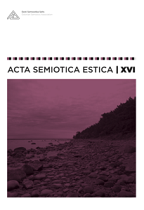Erialaterminid ja paradigma muutus – lapiku Maa ja eesti foneetika näitel
Changes of Scientific Paradigm and Terminology – Illustrated by the Flat Earth and Estonian Phonetics
Author(s): Mati HintSubject(s): Language studies, Phonetics / Phonology, Finno-Ugrian studies
Published by: Eesti Semiootika Selts
Keywords: Estonian; ortography; degree of quantity; phonology; syllabic quantity;
Summary/Abstract: Terminology is the infrastructure of any scientific description. It is not possible to describe the spherical Earth in the terminology of the flat Earth, as it is not possible to describe the syllable-length based prosody of Estonian in the terminology of the theory of three contrasting lengths of Estonian vowels and consonants. The topic of this article is the analysis of terminological controversy between the descriptions of (1) the flat and the spherical Earth, and (2) Estonian phonology and prosody, described as either in terms of the three quantity degrees of vowels and consonants, or in terms of syllabic quantities. Teaching Estonian orthography (created by Eduard Ahrens in 1843 and 1853) by means of the theory of the three quantity degrees of Estonian vowels and consonants leads to a controversy between contemporary (and 18th century, including Ahrens) interpretations of Estonian prosody as a manifestation of syllabic quantity. Views of the flat and the spherical Earth are mutually exclusive and incompatible, as are the theories of Estonian prosody as a realisation of three contrasting lengths of Estonian vowels and consonants, or as a system of contrasting syllable structures. Both, the change of understanding the Earth as spherical instead of flat, and understanding the Estonian prosody as a system of contrasting syllable structures instead of three degrees of Estonian vowels and consonants, are cases of paradigmatic changes in scientific views, or in the understanding of the world. This article argues in favour of changes in scientific terminology when a paradigmatic change in scientific views has happened. The situation in teaching Estonian orthography is schizophrenic, as the understanding of Estonian orthography is made dependent on the analysis of the three length degrees of Estonian vowels and consonants, and at the same time the competent sources of the Estonian language have abandoned this inadequate theory of Estonian sound system and prosody. The resulting rules of Estonian orthography have practically no points of contact with the Ahrens’ orthography. Another topic of this paper is the interpretation of grade alternation as a relationship between different stem variants, not as the relationship between sounds in these stem variants.
Journal: Acta Semiotica Estica
- Issue Year: 2019
- Issue No: 16
- Page Range: 10-25
- Page Count: 16
- Language: Estonian

